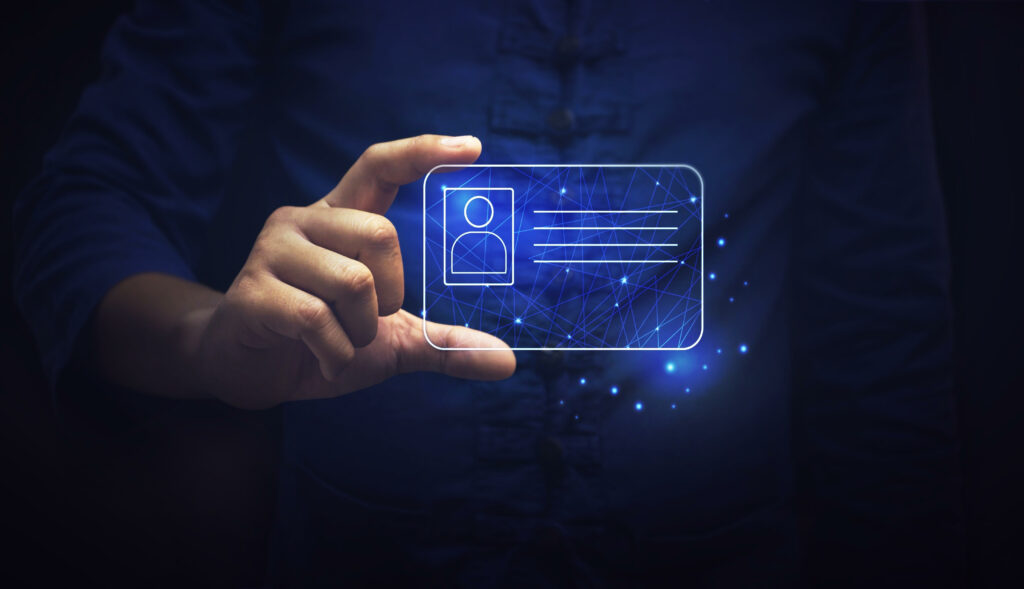QR Codes are an important part of marketing strategies in today’s world. They allow for more eco-friendly collateral and help keep interactions contactless. They are revolutionizing how we share information with our customers, from menus to business cards.
Business cards have been around for far longer than you might think they have. They date back to 15th-century China when royalty and aristocrats would use them as “visiting cards” to announce their arrival to whoever was hosting them. They reached popularity outside of the aristocracy in Europe around the 17th century. While they’ve evolved over the centuries, they remain a valuable tool for networking and connecting with potential customers.
The latest in business card evolution? Digitizing.
Digital business cards are a fast, easy way to share your information with people without ensuring you have a stack on you at all times. They also decrease the amount of cards people, including yourself, need to keep track of once they acquire them.
What is a digital business card?

Digital business cards come in a few forms. They’re still the same networking tool your grandfather used, just virtual. This offers numerous benefits that traditional business cards lack. A digital business card can be shared via a URL, a QR code, or even an app. The recipient can then click on the URL, scan the QR code or use an app to access the information. Some virtual business card apps require the recipient to have the same app to access the information, but others allow the card to be accessed without the app.
URLs can be embedded on websites or social media profiles allowing for wide distribution. QR codes can be put on webpages or apps or even printed out onto a piece of paper or a standard business card that people can scan, allowing for just one piece of paper instead of dozens, if not hundreds, of copies.
Who needs a digital business card?
Everyone who uses a traditional business card can benefit from a digital business card. It’s nearly impossible these days to do business without using devices like phones, computers, and the internet. If you are using these things, you need a virtual business card. Trust us.
When should you use a digital business card?
Whenever you would use a traditional business card. If you’re attending a conference, tradeshow, or networking event, you could print out a QR code and slide it into a tabletop display for people to scan after visiting your booth. You could also have a traditional business card with a QR code on it that people can scan, allowing you to have just one card on you. No more running out of cards to distribute halfway through the networking event.

Why is a digital business card better than a traditional paper card?
1. Environmentally friendly
No paper or printing is required. Of course, there are instances when a hard copy may be warranted, like some of the examples above. However, the virtual aspect allows you to reduce how many copies you need. So even if you print out a QR code here and there, it will be significantly less than what you would need with a traditional paper card. Multiply this by all of your employees that need them, and you’re saving a lot of trees!
2. Up-to-date information
Digital cards can be easily updated with the latest information. If your phone number changes or your office moves to a new address, you don’t need to worry about ordering new cards. That information can easily be updated without any disruption to your workflow. And new employees won’t have to wait for cards to be designed, printed, and shipped to start using them.
3. Convenient storage
Digital cards can be stored on a smartphone, reducing the need for a physical cardholder. If you opt for a hard copy, you only need one or two. It’s less you need to keep track of, eliminating the classic “let me give you my card” while you fumble around in your pockets for one.
4. Analytics tracking
Digital cards can track who has viewed the card and when. Many times a digital business card can store the person who scans its information in your address book or a system, so you don’t have to worry about collecting it yourself. This makes it much easier to track leads, follow up with people you met networking, and get a sense of your potential client’s interest.
5. Cost-effective
Digital cards are typically free or low-cost compared to printing paper cards. If you go the app route, there are many free options out there. Printing out batches of paper business cards for every person on your team who needs them can add up quickly. Especially if they need to be updated.
6. Interactivity
Digital cards can contain links, videos, and other interactive elements. You aren’t limited to just a name, phone number, and address. You can use it as an opportunity to share a video highlighting your product or to link to your website to give the recipient easy access directly to your company.
7. More creativity
No longer limited by the space of a small business card, the world is truly your oyster. From the design to the content to the distribution experience, you have more choices than you do with a paper card. The creativity that digital business cards give you allows for an opportunity to stand out from your competitors immediately and make a lasting impression.



